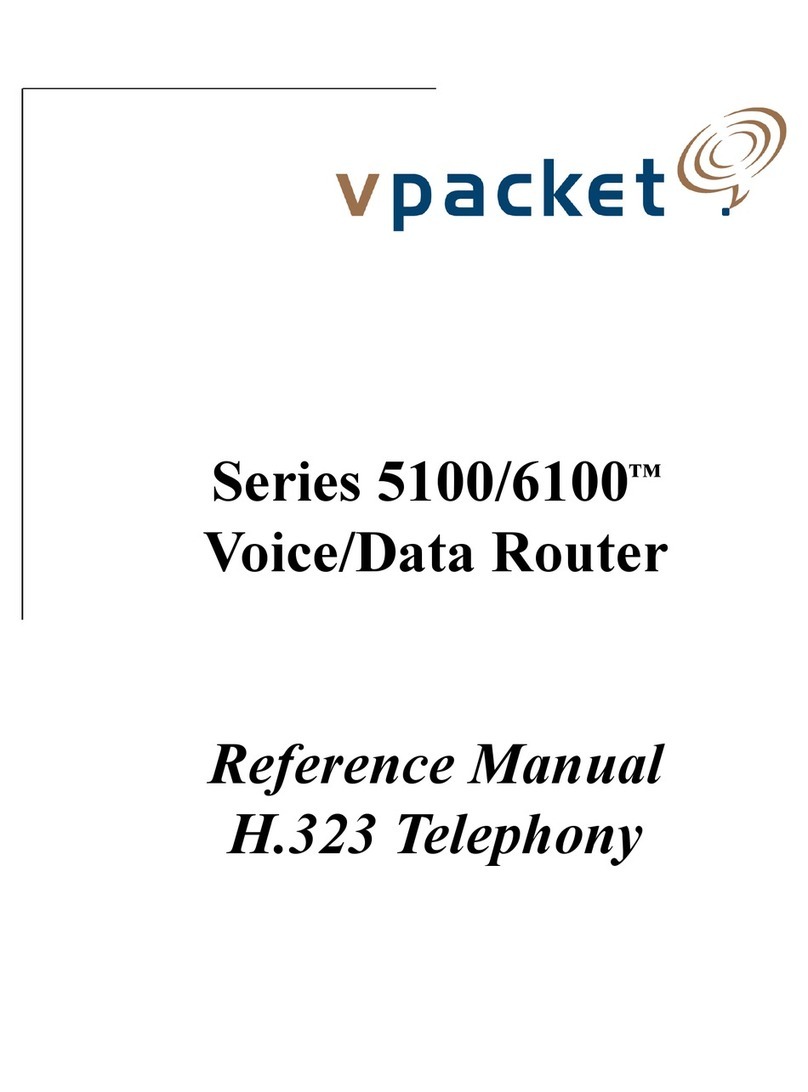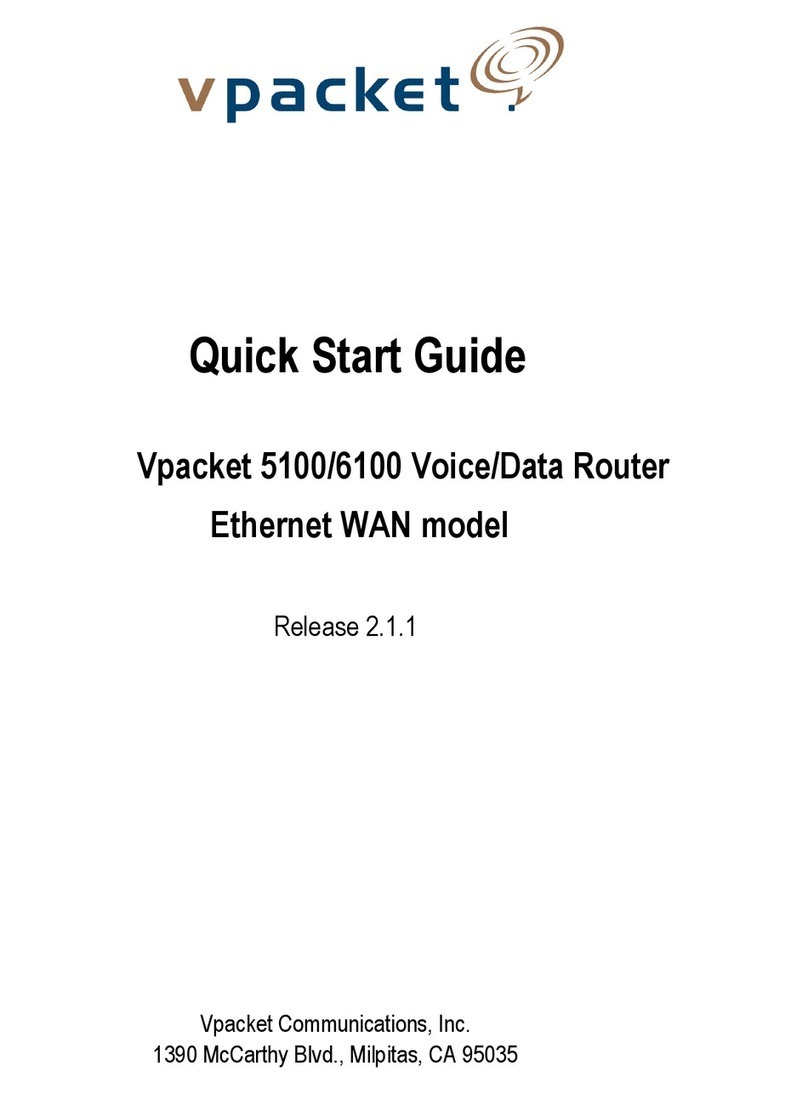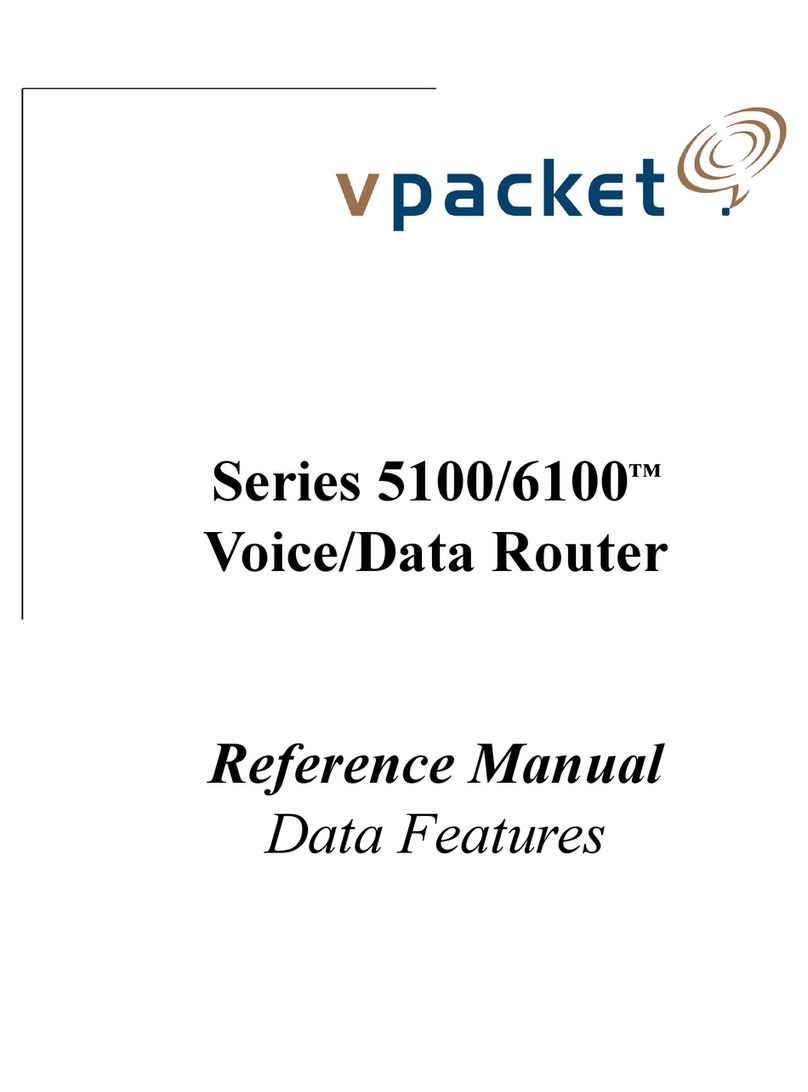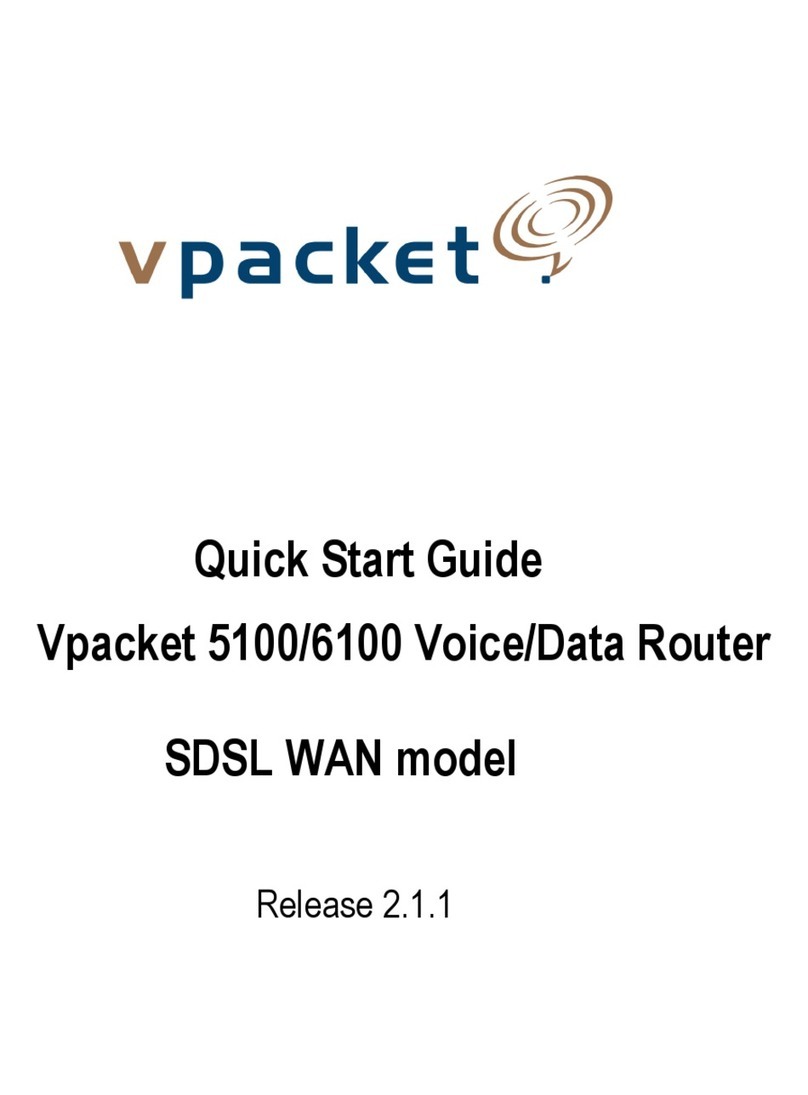Trademarks and copyrights
All trademarks and registered trademarks listed belong to their respective owners.
Vpacket, Vpacket Communications, and the Vpacket 5100/6100 Series Voice/Data Router are registered trademarks of Vpacket
Communications, Inc., Milpitas, California.
Vpacket Communications, Inc. does not warrant that the hardware will work properly in all environments and applications, and makes no
warranty and representation, either implied or expressed, with respect to the quality, performance, merchantability, or fitness for a particular
purpose.
The products and programs described in this document are licensed products of Vpacket Communications, Inc. This document contains
proprietary information protected by copyright, and this document and all accompanying hardware, software, and documentation are
copyrighted. Vpacket Communications, Inc. has made every effort to ensure that this manual is accurate. However, information in this guide is
subject to change without notice and does not represent a commitment on the part of Vpacket Communications, Inc. Vpacket Communications,
Inc. makes no commitment to update or keep current the information in this document, and reserves the right to make changes to this manual
and/or product without notice. Vpacket Communications, Inc. assumes no responsibility for any inaccuracies and omissions that may be
contained in this document. If you find information in this document that is incorrect, misleading, or incomplete, we would appreciate your
comments and suggestions.
No part of this document may be reproduced or transmitted in any form or by any means, electronic or mechanical, including photocopying,
recording, or information storage and retrieval systems, for any purpose other than the purchaser's personal use, without the express written
permission of Vpacket Communications, Inc.
Copyright © 2000-2002 by Vpacket Communications, Inc.™ U.S. Patents Pending. All Rights Reserved. Reproduction or media conversion by
any means is protected by copyright and may only occur with prior written permission of Vpacket Communications, Inc.
The PSQM technology included in this product is protected by copyright and by European, US, and other patents, and is provided under license
from OPTICOM Dipl. Ing. M. Keyhl GmbH, Erlangen, Germany, 2001
1390 McCarthy Boulevard
Milpitas, CA 95035
Tel: 1(866)VPACKET (872-2538)
Fax: 1(408)433-5870
E-mail: mail@vpacket.com
Web: http://www.vpacket.com
Document title Date
issued Product number Release
Vpacket Series 5100/6100 Voice/Data Router Reference Manual MGCP
Configuration
June 2002 750-0031-001, Rev A 2.1.1
Vpacket 5100/6100 Series Voice/Data Router Reference Manual
(Data Features)
750-0025-001, Rev A
Vpacket 5100/6100 Series Voice/Data Router SIP Telephony Configuration 750-0032-001, Rev A
Vpacket 5100/6100 Series Voice/Data Router H.323 Telephony Configuration 750-0033-001, Rev A
Vpacket 5100/6100 Series Voice/Data Router Web Interface Manual 750-0035-001, Rev A

































